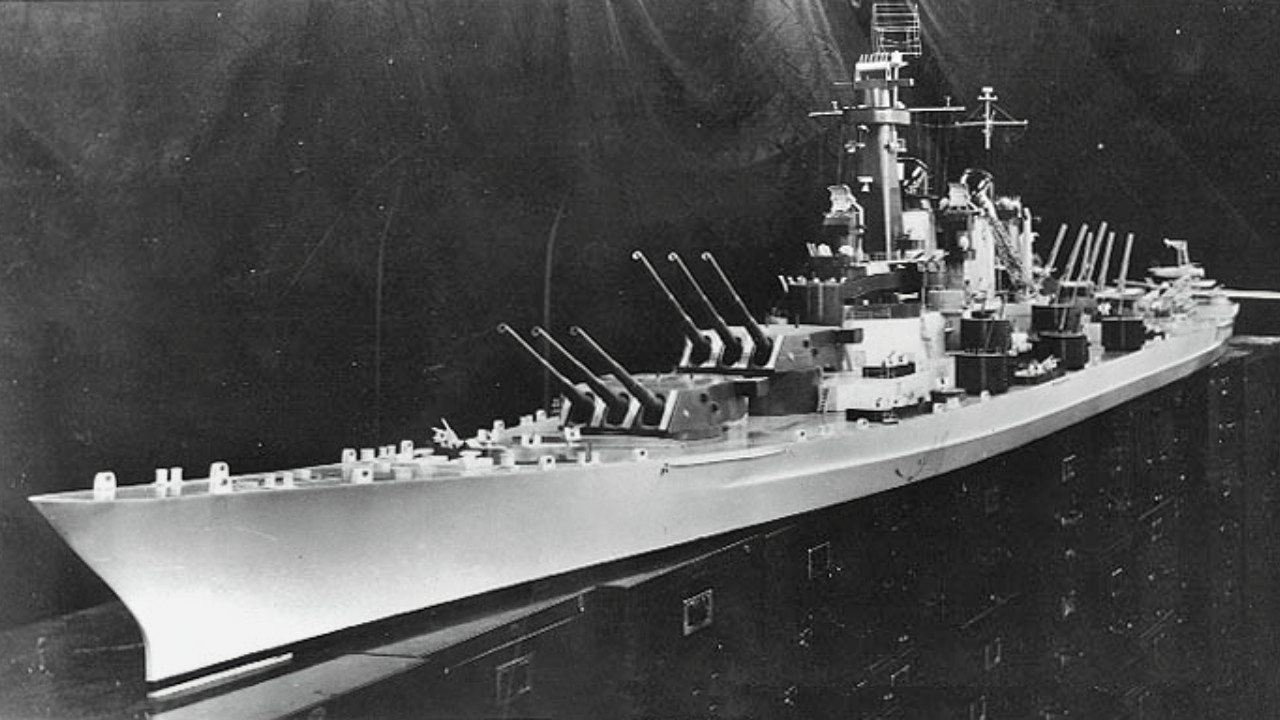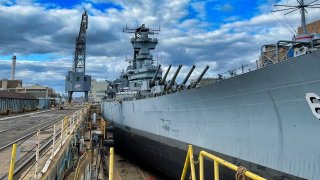Montana-Class vs. Iowa-Class: Which Would Have Been the Better Battleship?
The Montana-class battleships, authorized but never constructed, represented what could have been the pinnacle of U.S. naval power during World War II, eclipsed by the strategic shift towards aircraft carriers. Designed to outclass the preceding Iowa-class in firepower and size, the Montana-class aimed to enhance U.S. naval capabilities significantly.
Summary: The Montana-class battleships, authorized but never constructed, represented what could have been the pinnacle of U.S. naval power during World War II, eclipsed by the strategic shift towards aircraft carriers. Designed to outclass the preceding Iowa-class in firepower and size, the Montana-class aimed to enhance U.S. naval capabilities significantly. With plans for twelve 16-inch guns per ship, these vessels would have boasted a 25% increase in firepower over the Iowas. However, the evolving naval warfare landscape, underscored by the effectiveness of aircraft carriers demonstrated at Pearl Harbor and against the Royal Navy's Force Z, shifted priorities away from battleship construction. The Montana-class was ultimately canceled in 1943, a decision that marked the end of new battleship designs in the U.S. Navy. While the Iowas proceeded to serve due to their near-completion and compatibility with the new Essex-class carriers, the Montana-class remained a testament to the transitional period in naval warfare, where the supremacy of battleships was superseded by the advent of carrier-based power projection.
Montana vs. Iowa-Class Battleship: Which Would Have Been Better?
The Montana class could have been the U.S. Navy’s most powerful battleship if it had made it past the design phase. But like all battleships in the World War II era, the purpose of the Montana ships was overridden by the rise of the aircraft carrier.
Five Montana battleships were authorized for construction, and they were designed to bring a whole new set of capabilities to the open waters. In fact, these leviathans would have dwarfed the preceding Iowa-class vessels. The Montana class never made it to sea, though, leaving the Iowa class as the last group of battleships commissioned by the Navy.
Introducing the Iowa-Class
As tensions were mounting in the inter-war period in the 1930s, U.S. engineers prioritized the construction of lethal battleships. As part of the service’s War Plan Orange strategy against Imperial Japan, it was assumed that future combat would take place in the Central Pacific. Since Japan had an arsenal of high-speed cruisers and capital ships, the U.S. worried that its own fleet of standard-type battleships would not be able to pursue enemy ships in battle. Around this time, the Second London Naval Treaty’s escalator clause kicked in, allowing the U.S. and other signatories to build bigger guns and larger vessels.
Iowa-class ships were therefore constructed as 45,000-ton vessels equipped with 16-inch guns, as opposed to earlier battleships limited by the treaty at 35,000 tons with 14-inch guns. Overall, nine 16-inch Mark 7 naval guns were fitted on each ship. They could fire explosive and armor-piercing shells. The three-gun turrets positioned on each battleship could fire any combination of its guns, including a broadside of all nine. In addition to these armaments and large-caliber guns, the Mark 38 Gun Fire Control System was incorporated on the battleships.
Introducing the Montana-Class
While the Montana-class ships never made it past the conception phase, big plans were proposed to make these vessels even more capable than their Iowa predecessors. Notably, twelve 16-inch main guns were intended to be fitted on each vessel. The extra guns would have made the proposed USS Montana, USS Ohio, USS Maine, USS New Hampshire, and USS Louisiana 25% more lethal. These proposed 16-inch guns were so large, weighing roughly 2,700 pounds each, that it would have taken dozens of sailors to fire each one.
The Montana-class ships were also designed to dwarf the already giant Iowa battleships. Initial proposals for the new class indicated that each vessel would have measured 890 feet long and would have displaced 64,599 tons. On the other hand, the Iowa battleships measured 860 feet. Due to the Montana class’ heavier proposed armaments, the ships in this series would have been slower than their predecessors. The Iowa battleships could travel at speeds in excess of 33 knots, while the Montana battleships would have been limited to 28 knots.
Despite the Navy’s ambitious plans for its Montana battleships, the ships never came to fruition. The Japanese attack on Pearl Harbor on December 7, 1941, coupled with the destruction of the Royal Navy’s Force Z a few days later, indicated that aircraft carriers were surpassing battleships as the most significant naval warship. In the early 1940s, the Montana ships were initially delayed in order to allocate more funds and resources to aircraft carrier construction. In 1943 the Montana proposal was nixed altogether. It would then take the Navy more than a decade to introduce a warship as large as the proposed Montanas, with the deployment of the USS Forrestal supercarrier in the mid-1950s.

When the Montana-class was canceled, prospects also looked grim for the Navy’s Iowa-class battleships. But the Iowas were nearly complete on the construction line and were needed to operate alongside the service’s new Essex-class aircraft carriers, so the battleships stayed on the trajectory toward commissioning. Although the Montana ships would have provided more advanced capabilities and more impressive specs than their Iowa-class predecessors, these battleships were simply not meant to be.
About the Author: Maya Carlin
Maya Carlin, National Security Writer with The National Interest, is an analyst with the Center for Security Policy and a former Anna Sobol Levy Fellow at IDC Herzliya in Israel. She has by-lines in many publications, including The National Interest, Jerusalem Post, and Times of Israel. You can follow her on Twitter: @MayaCarlin.
Hero Image by Ethan Saunders. All others are Creative Commons.


